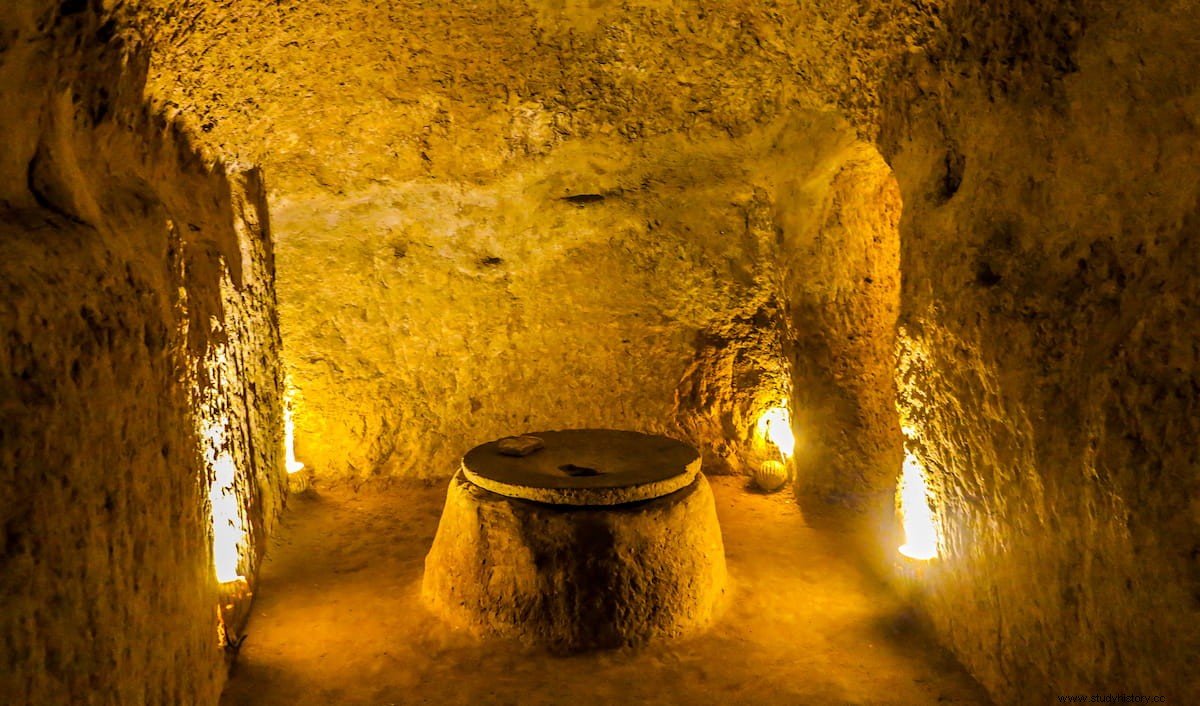In the province of Isfahan, in the center of Iran, is the city of Nushabad (or Nooshabad), which some identify with one of the capitals of Chosroes I, one of the main kings of the Persian Sassanian dynasty who reigned between 531 and 579 AD, a contemporary of the Byzantine Justinian I (whom he fought for control of the Middle East).
A legend tells that a king, perhaps Khusro himself, stopped in the area on one occasion to drink water from one of its wells, finding it so extremely cold and clear that he ordered the construction of the city around the well and called it Anoushabad. , which means city of cold and tasty water .
Whether the legend is true or not, the fact is that despite being in the central desert region of Iran, it does indeed have springs of fresh water.

The city, which today has about 10,000 inhabitants, is one of the main tourist attractions in the country due to the fact that in 2006 an amazing discovery took place there. A neighbor who was digging on his property to open a well found an unexpected surprise:under his house, and much of the modern city, lay a labyrinth of passageways and underground chambers.
It turned out to be an entire city underground, at a depth of between 4 and 18 meters depending on the area and about 4 square kilometers in size. The rooms, corridors and channels that make it up are structured on three interconnected levels whose height varies between 1.70 and 1.80 meters.

It is called Ouee (or Ouyi) and is believed to date from the Sassanian era, about 1,500 years ago, although it is unknown for what purpose it was built. Among the hypotheses being considered are serving as a refuge from high daytime temperatures (and low nighttime temperatures), or from external attacks.

It seems that the entrance to the underground was done through different points, even from the houses of the inhabitants of the city, but also from some public spaces. This has led some researchers to suggest that it is actually an air conditioning system. for the hot summers in the area.
Others, on the contrary, see in the system of passageways and nooks and crannies a defensive system with which to ambush and capture the enemies that ventured into them.
In any case, the passageways are arranged with rooms on the sides (probably one room per family), while the vertical tunnels serve as a connection between the levels, and the U-shaped ones would be ventilation vents. The complex also includes an impressive vaulted cistern, which is now used to receive visitors.

The underground city was in use throughout the Middle Ages, the time of the Safavid Empire (1501-1722) and even in the years of the Khayar dynasty (which ruled Iran between 1785 and 1925). Sometime towards the end of this last period it fell into disuse and was completely forgotten, until it was rediscovered in 2006.
